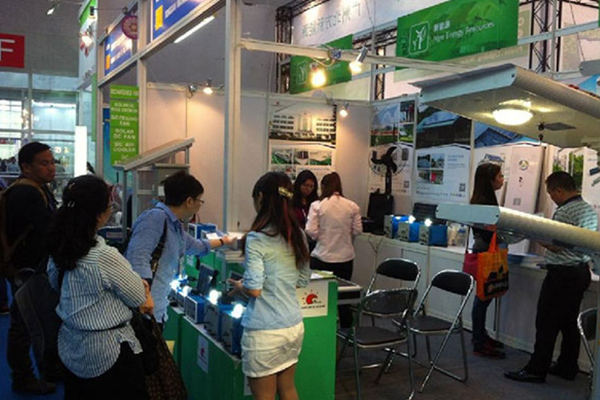
Many photovoltaic executives and experts are optimistic about the future combination of photovoltaic and energy storage, 5G and new infrastructure.
Zhenguo Lee, Baoshen Zhong: Photovoltaic + Energy Storage
Photovoltaic + energy storage has always been a hot topic. In recent years, a number of pilot projects have been carried out. Many power groups and photovoltaic companies, including China Power Investment Corporation, China General Nuclear Power Corporation, and Sungrow Power (300274.SZ), are deploying photovoltaic + energy storage. Pilot projects, including the list of pilot projects previously issued by Xinjiang, have a total installed capacity of 350,000 kilowatts.
Why photovoltaic + energy storage would be a better solution? Baoshen Zhong, Chairman of Longji (601012.SH), explained to reporters: “The traditional power generation end and the power consumption end are unbalanced. For example, thermal power plants have always used certain standards to generate electricity, but consumers do not consume electricity according to certain standards. But there is a consumption curve, so how to cut peaks and fill valleys’ has always been a problem.”
Baoshen Zhong pointed out to reporters that in the past, the power generation end was continuous (generation), but the consumption of the electricity end was discontinuous, so adjustments should be made through the price mechanism, pumped storage and other mechanisms. The photovoltaic + energy storage model is exactly what Power generation during the day and energy storage at night are consistent with the trend of electricity consumption, and will therefore bring about changes in the energy system.
Zhenguo Li, founder and president of Longi Green Energy Technology Co., Ltd., took electric vehicles as an example and pointed out that the energy storage function of electric vehicles is very beneficial to power regulation. “Today, the global annual electricity consumption is about 26 trillion kilowatt-hours, an average of 70 billion kilowatt-hours per day. Even if it doubles in 20 years, it will be more than 140 billion kilowatt-hours per day. In 20 years, the global household electric vehicles will definitely develop to 1 billion vehicles, the total energy storage will reach 70 billion kWh.”
This has brought huge opportunities for the development of the solar panel power storage system industry. Zhenguo Li pointed out that the cost of chemical energy storage is now one-third of what it was ten years ago, and the cost can be reduced to one-third of the current one in the next ten years. Therefore, with the declining cost of photovoltaics, energy storage technology Gradually mature, it will be possible to use clean energy to produce more clean energy in the future.
Jifan Gao: New infrastructure represented by 5G
In addition, 5G and new infrastructure are also hotspots of concern. Jifan Gao, Chairman and General Manager of Trina Solar Co., Ltd. (688599.SH), said: “The new infrastructure’ represented by 5G, big data centres, charging piles, clean energy, artificial intelligence, and industrial Internet will usher in Explosive development.”
Gongshan Zhu: Photovoltaic + Energy storage, 5G
Gongshan Zhu, chairman of GCL (Group) Holdings Co., Ltd., judged that a new frontier in the solar module production industry has arrived. In large-scale energy storage, industrial and commercial and household energy storage, 5G base station energy storage, data center energy storage and other full-scene energy storage applications, Photovoltaic is the “best companion”. “In the next five years, China’s photovoltaic + energy storage alone is likely to achieve an annual export capacity of 200-400 billion US dollars.” Gongshan Zhu said.
Gongshan Zhu also specifically pointed out the “photosynthesis” of 5G technology and photovoltaics. He believes that photovoltaics can be closely integrated with 5G base stations, UHV, big data, AI intelligence, new energy charging piles, industrial Internet, intercity railways, etc., and participate in the entire process of 5G integrated energy life cycle management. In addition, photovoltaic + sewage treatment Factories, big data parks, smart homes, logistics cloud warehouses, green ports, passive ultra-low energy buildings, etc. will also become more common. Therefore, the International Energy Agency predicts that by 2030, the global cumulative installed capacity of photovoltaics is expected to reach 1721GW, and will further increase to 4670GW by 2050.
Hanyuan Liu and Renxian Cao: The industry urgently needs policy support
Regarding the current problems that need to be solved in the development of the photovoltaic industry, Liu Hanyuan, chairman of the board of directors of Tongwei Group (600438.SH), pointed out that the current increase in the proportion and space for renewable energy planning by the National Development and Reform Commission is far from enough. In the Fifth Plan, it is necessary to give renewable energy and photovoltaic industries more room for development. In addition, Cao Renxian, chairman of Sungrow Power Supply Co., Ltd. (300274.SZ), called for a carbon tax to be levied on fossil energy as soon as possible to maintain a fairer competitive environment for renewable energy.